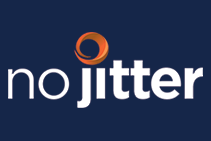For businesses today, experience is currency. In a world inundated with information and options, experience is the top way that organizations can compete and differentiate within their industries. The majority (85%) of business leaders at top-performing companies agree that customers expect relevant, real-time, and dynamic experiences, as
reported by Accenture.
The importance and broader business impact of experience is undeniable: 51% of customers have switched businesses due to poor experiences,
according to Vision Critical, a firm that collects consent data from consumers. In the end, unhappy customers cost U.S. businesses alone $537 billion a year, the firm reported.
As the workforce has become more digitally connected and internationally dispersed, employee expectations of professional and personal experiences have started to blur. Your teams now expect the same seamless experiences in their offices as they do when they’re at home bingeing on TV or shopping online. We, as humans, expect work communication and collaboration experiences to be seamless, in real time, and move fluidly across multiple channels.
Today’s rules and best practices are dramatically different than they were 10 years ago. You’ve likely implemented an assortment of tools and solutions designed to create seamless and enjoyable experiences for your customers and teams alike. It’s also likely that these tools don’t work together or talk to each other, creating workflow bottlenecks and disjointed conversations where people must repeat information to several parties.
How many times have you tried to connect with a customer service agent through chat, only to be asked to re-explain your situation in an email to a different department? How many times have you had to toggle between different tools at work in order to find and relay information for a time-sensitive project? These completely different scenarios illustrate the frustrations of cobbled-together tools and apps.
Communications platform as a service (CPaaS), however, is designed to alleviate the pain that comes with having disparate real-time communications modes. Rather than having separate apps and tools for specific functions, such as calling, video conferencing, and messaging, CPaaS embeds communications into processes and workflows, leading to a significant improvement in customer and employee experiences. As a result, the worldwide CPaaS market is expected to reach $10.9 billion by 2022,
IDC projects.
CPaaS is poised to make such an impact with enterprises for these four key reasons:
- It’s mobile -- Many tools and solutions are “optimized” for mobile devices, yet CPaaS is designed to meet our needs no matter where we are and what tasks we’re trying to complete at a specific point in time. Your employees must be able to access critical information and connect with key team members wherever and whenever.
- It’s flexible -- CPaaS is inherently flexible. A series of different communication touch points, connected via APIs, enrich the software. As you add each new method, your people have new ways to connect, collaborate, and complete tasks, and they’re empowered to use whichever mode of interaction they prefer at a specific moment. If taking a train to a meeting, a manager may want to give his team a status update via text. However, if working from home, phone or video calling may be more appropriate. Employees aren’t forced to stick with the communication method they began with and if they need to switch channels for a specific reason, they can do so easily and without exiting the collaborative experience.
- It’s instant -- A collaborative moment between team members can begin whenever a need or inspiration strikes, and customers can initiate a conversation with a brand representative the moment they need assistance. We expect communication to be immediate and will discount businesses that aren’t able to meet this golden rule.
- It’s contextual -- All components of a conversation integrate into a single workflow -- even if delivered using different channels -- ensuring that everyone has the complete picture of conversations and information being shared. On the back end, enterprises have access to user segmentation and reporting, providing deep insights into behaviors and preferences to improve experiences even further. For example, if a customer uses text messaging to get in touch with a service representative, but then switches to phone to have a more detailed conversation, the business will have that insight.
Every enterprise and every employee is unique, as are their preferred channels and methods for connecting with customers and collaborating with partners and colleagues. By harnessing CPaaS, your teams will be empowered to communicate based on their unique needs and expectations. Meanwhile, you’ll have the ability to navigate the ever-expanding number of digital channels and touch points, while creating contextual and enjoyable experiences for all.










